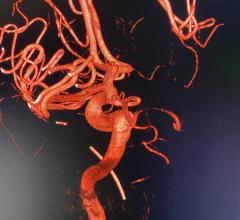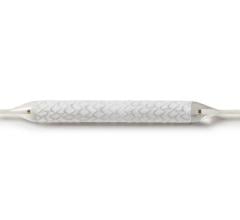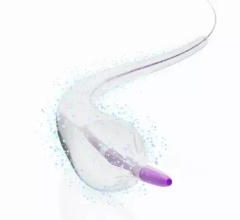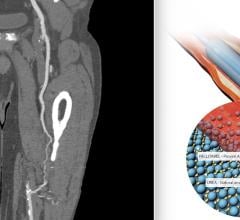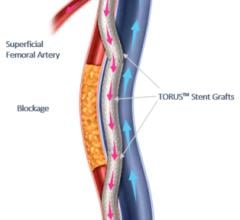October 8, 2014 — More than 40 percent of Americans aged 40 and older have experienced one or more of the most common symptoms[1] of peripheral arterial disease (PAD). However, the majority is unfamiliar with the disease and relatively few who experience symptoms see a doctor, according to a recent online awareness survey conducted by Harris Poll. [2]
The Covidien-sponsored survey of more than 2,000 U.S. adults in September highlights the need for greater awareness of PAD, a disease affecting approximately 202 million worldwide,[3] and 8 to 12 million people in the United States.[4]
Specific findings of the survey included:
- 43 percent of Americans ages 40 and older have experienced one or more of the most common symptomsi of PAD;
- 63 percent of adults ages 40 and older have never heard of PAD;
- Only 34 percent of those who have experienced symptoms of PAD have spoken to their doctor.
Additionally, the most commons symptoms of PAD that were experienced by Americans ages 40 and older included: fatigue when walking or climbing stairs (20 percent); pain that disturbs their sleep (16 percent); and pain when walking or climbing stairs (17 percent). In 42 percent of Americans ages 40 or older, the symptoms impacted their daily life, including not being able to exercise as much/at all (27 percent), having to stay home more (17 percent) and weight gain (15 percent).
“PAD can be difficult to recognize and diagnose, and adults often dismiss symptoms of PAD as normal signs of aging,” said Mark Turco, M.D., chief medical officer, Vascular Therapies, Covidien. “However, it is important for individuals to talk to their doctor about the symptoms and risks of PAD. PAD is usually also associated with other cardiovascular diseases, and if left undiagnosed, can lead to major health issues.”
PAD is one of the most common vascular diseases. It occurs when arteries in the legs become narrowed or blocked by plaque, and it can cause severe pain, limited physical mobility and non-healing leg ulcers. PAD can also result in serious health consequences such as amputation, cardiovascular disease and death. In fact, people with PAD are six times more likely to die from cardiovascular disease within 10 years than people without PAD.[5]
There are a number of risk factors associated with PAD, some of which are controllable and include smoking, diabetes, high cholesterol and high blood pressure. In fact, one in three people ages 50 and older with diabetes are likely to have PAD[6] and more than 80 percent of patients with PAD are current or former smokers.[7]
Advancing age also increases an individual’s risk for PAD. Up to 20 percent of individuals 65 and older have PAD.[ix] In fact, the survey found adults aged 55 and older were more likely to experience the most common symptoms of PAD.
Methodology of the Survey
This survey was conducted online within the United States by Harris Poll on behalf of Covidien from Sept. 2-4, 2014 among 2,017 adults ages 18 and older, among which 1,393 are age 40+. This online survey is not based on a probability sample and therefore no estimate of theoretical sampling error can be calculated.
For more information: www.covidien.com
References:
1.The survey defined the most commons symptoms of PAD as: claudication (pain), fatigue, heaviness, tiredness, cramping in the leg muscles (buttocks, thigh, or calf) that occurs during activity such as walking or climbing stairs; pain in the legs and/or feet that disturb sleep; sores or wounds on toes, feet, or legs that heal slowly, poorly, or not at all; color changes in the skin of the feet, including paleness or blueness; lower temperature in one leg compared to the other leg; poor toenail and leg hair growth.
2.The survey was conducted online within the United States from September 2-4, 2014 among 2,017 adults ages 18 and older among which 1,393 are age 40+. The survey was conducted by Harris Poll on behalf of Covidien via its Quick Query omnibus product. Figures for age, sex, race/ethnicity, education, region and household income were weighted where necessary to bring them into line with their actual proportions in the population. Propensity score weighting was used to adjust for respondents’ propensity to be online.
3.Fowkes, F G et al. Comparison of global estimates of prevalence and risk factors for peripheral artery disease in 2000 and 2010: a systematic review and analysis. The Lancet .19 October 2013 ( Vol. 382, Issue 9901, Pages 1329-1340 ) doi: 10.1016/S0140-6736(13)61249-0
4.Ratchford, E. Evans, N. Vascular Disease Patient Information Page: Peripheral artery disease. Vasc Med June 2014 vol. 19 no. 3 218-220. doi: 10.1177/1358863X14534803.
5.Belch, J et al. Peripheral Arterial Disease -- A Cardiovascular Time Bomb. British Journal of Diabetes and Vascular Disease. 2007;7(5):236-239.
6.National Institute of Health Peripheral Arterial Disease Fact Sheet - NIH Publication No. 06-5837 August 2006
7.Ratchford, E. Evans, N. Vascular Disease Patient Information Page: Peripheral artery disease. Vasc Med June 2014 vol. 19 no. 3 218-220. doi: 10.1177/1358863X14534803.
8.Roger VL, Go AS, Lloyd-Jones DM, et. al. Heart Disease and Stroke Statistics 2011 Update: A Report From the American Heart Association. Circulation 2011;123:e18-e209.


 March 20, 2024
March 20, 2024 
